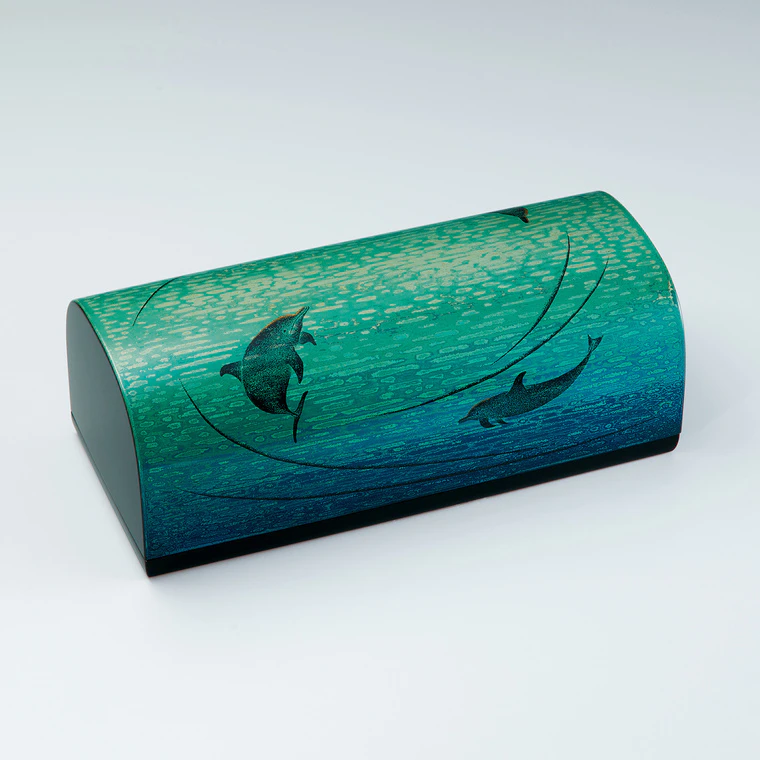Kanshitsu box with design in kinma. “Random thoughts”
H 10.4 x W 28.8 x D 13.0 cm,Year.2022The prices of the artworks on Gallery Japan are determined by the artists themselves and are published directly on the website.
- according to today's currency rate
- shipping fees not included
Michiyo Kitaoka
1977 -- Lacquerware
-
Price Range
$3,500 - 5,000
Info
The prices of the artworks on Gallery Japan are determined by the artists themselves and are published directly on the website.
close - Awards at Japan Kōgei Assoc. Exhibitions : 8
About the Artwork
I've once heard that after reincarnating 100 thousand times as humans, people can reincarnate as a lotus if a plant, or a dolphin if an animal in their next life.
Seeing the dolphins swimming elegantly in the water at the aquarium, I always thought that I would like to reincarnate as a dolphin. I made this piece thinking that when the time comes and I reincarnate as a dolphin, I may not remember the dolphins that I saw when I was a human.
I made the base with dry lacquer. After painting layers of black lacquer for more than 10 times, I carved a large oval on the entire piece.
I added blue and green colored lacquers while changing the colors little by little and polished it. I carved the dolphins with dots and applied blue lacquer.
Description
-
CategoryLacquerware
-
DimensionsH 10.4 x W 28.8 x D 13.0 cm
-
Year presented2022
-
RarityUnique
Techniques Used
Dry lacquer
For works of dry lacquer (kanshitsu), first a clay form is created and plaster is used to take a mold of the form. Next, repeated layers of hemp cloth and lacquer are applied to the mold until they are built up to the desired thickness. Finally, the mold is removed and additional coats of lacquer are applied to finish the piece. The hemp fibers are strengthened when the lacquer bonds with them, making dry lacquer an excellent technique for creating sturdy forms with a significant degree of freedom.
Kinma
There are three basic variations of kinma based on the method used for cutting the motifs: line cutting, dot cutting, and a combination of the two. All three types use a special carving blade known as a kinma ken. Originally, kinma only consisted of motifs made of incised lines. However, by combining a variety of colored lacquers and cutting techniques, the art has lent itself to increasingly complex designs.
Selected exhibitions
- The 69th Japan Traditional Kōgei Exhibition (2022)
- Selected

The prices of the artworks on Gallery Japan are determined by the artists themselves and are published directly on the website.
